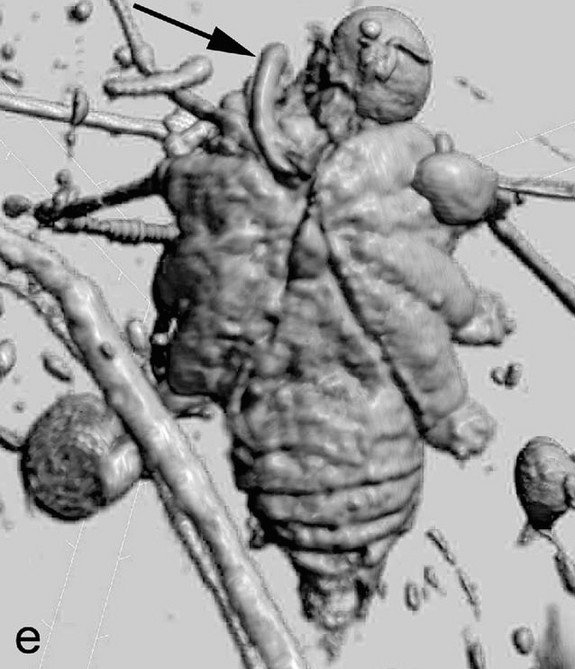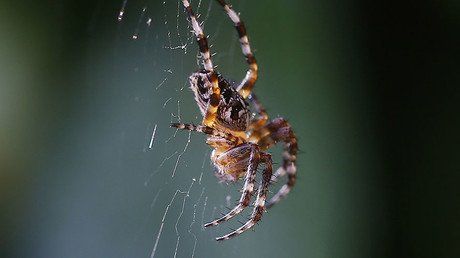Call your doctor immediately: Spider sports 99-million-year erection

It’s hard to be a teenager, what with the raging hormones and sudden erections. It was especially hard for a rather “happy” male harvestman spider that was entombed in amber mid-tryst. He remained frozen at attention ‒ alone ‒ for some 99 million years.
As Charles Dickens might have said, it was the best of times, it was the worst of times for the amorous arachnid who was just coming of age.
The male harvestman Halitherses grimaldii, a cousin of the modern-day daddy longlegs, had just crossed the threshold from boyhood to adulthood. He was wielding his impressive member ‒ his erect penis had grown to nearly half his body length ‒ when the oozing resin surrounded him. As the goo hardened into amber, the spider’s manhood was left on display for excited scientists to discover many millennia later.

The boner-bearing bug was found buried in Burmese amber and was then studied by a team of researchers led by Jason Dunlop, of the Berlin Museum for Natural History. They say that the penis fossil is among the best preserved ever found.
“This is the first record of a male copulatory organ of this nature preserved in amber and is of special importance due to the age of the deposit,” the team wrote in their study, which was published in the February issue of the journal The Science of Nature.
“The penis has a slender, distally flattened truncus, a spatulate heart-shaped glans and a short distal stylus, twisted at the tip,” they noted.
The specimen had likely just concluded his months-long trip through puberty and may have been losing his virginity when he died.

"It must have been in an amorous state to have it out like this," Ron Clouse of the American Museum of Natural History, who wasn't involved with the study, told National Geographic. "This poor animal."
Of course, scientists can’t explain exactly how the excited arachnid died. It may not have been an amorous experience after all: He could have been caught by the resin and struggled against it, causing his blood pressure to rise… and his penis along with it.
"In harvestmen, the penis is sometimes pushed out by increasing blood pressure," Dunlop told Livescience. "Maybe as the animal struggled when it got caught in the sticky tree resin, its blood pressure rose and the penis was pushed out accidentally?"

Most male harvestmen species, including H. grimaldii, have a true penis that they insert into genital openings next to females' mouthparts.
"It was very surprising to see the genitals, as they are usually tucked away inside the harvestman's body," Dunlop told Livescience.
The discovery of the fossil is exciting not just because the well-endowed arachnid has his genitalia on full display, but because he may represent a whole new family of harvestmen.
“In living harvestmen, the penis yields crucial characters for their systematics,” the researchers wrote. “The large eyes in the fossil differ markedly from other members of the subfamily Ortholasmatinae to which H. grimaldii was originally referred.... Thus, the unique structure of the penis seen here, and the probable lack of diaphanous teeth, present in all other extant non-acropsopilionid Dyspnoi, suggest that H. grimaldii represents a new, extinct family of large-eyed dyspnoid harvestmen.”
Scientists study harvestmen because they have wandered the earth for more than 400 million years, providing a unique insight into evolution of other life-forms, not just arachnids. The easiest way to tell harvestman species apart is to inspect their genitals.
"Different families, and even species, [of harvestmen] can have a characteristic penis shape," Dunlop told NatGeo. "In fact, [penises] are often even more important than the shape of the body and legs."
Dunlop is a curator of the arachnid, making a career out of hunting for and analyzing fossil harvestmen. A private collector sent him the specimen with the fossilized private parts out in the open. The amber-enclosed arachnid is rarer than rare because only 38 harvestman fossils have ever been found, and this is the only one that has pitched a tent, the researchers noted.















